Blog
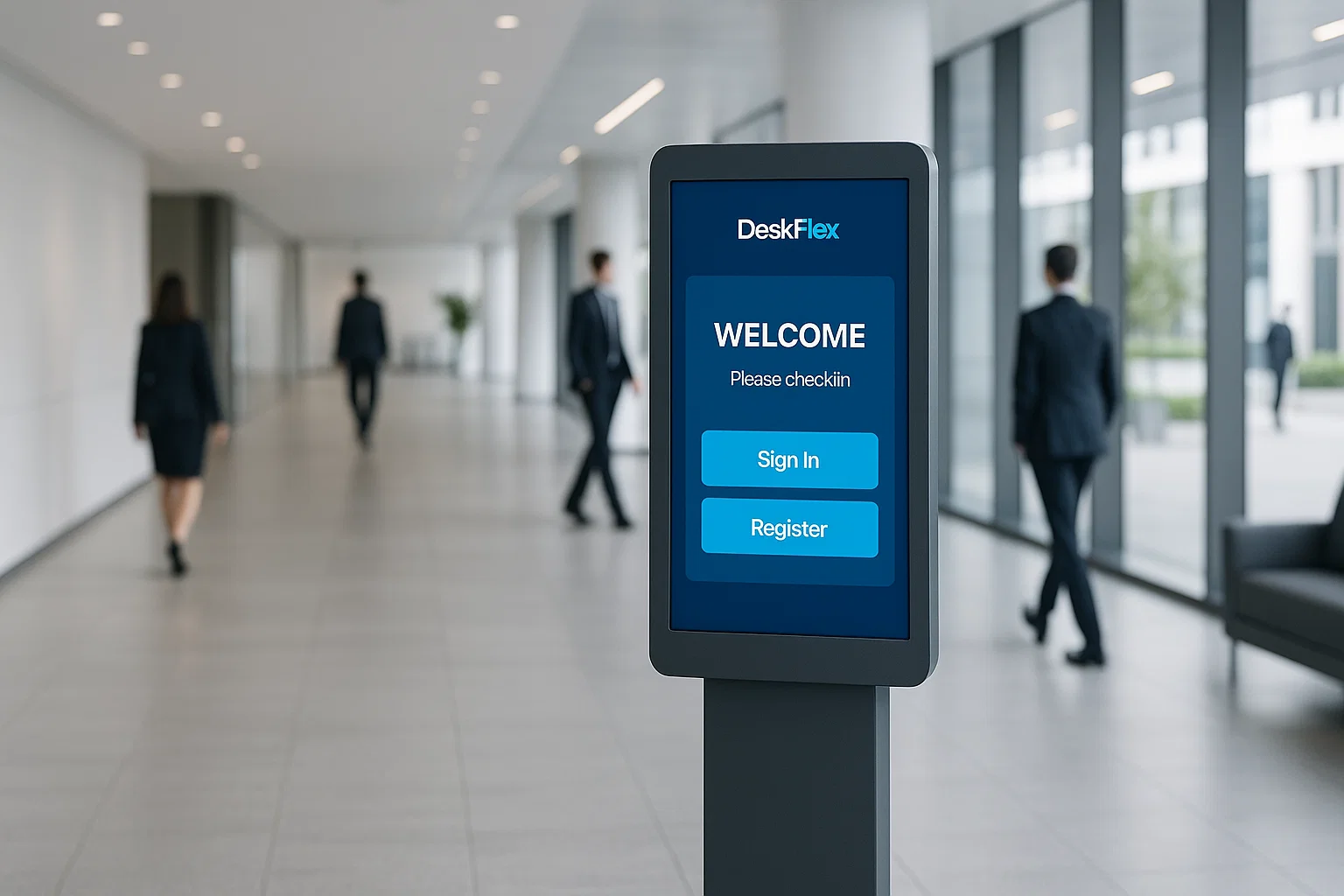
Kiosk Mode Explained: Benefits, Uses, and Future of Digital Kiosks
In modern-day setups, one major challenge for enterprise businesses is maintaining devices while keeping employees and customers focused with minimal disruption.
Open access to tablets, phones, or shared computers has often resulted in absolute chaos. Employees might include gaming during breaks, or visitors patiently standing around without being helped. These distractions waste valuable time and hurt productivity, jeopardizing customer satisfaction.
Kiosk mode is a compelling solution that can turn even the most mundane device into a secure tool. It restricts devices to one app, providing a user interface for only the things that matter to that business. Whether it’s a lobby kiosk to guide visitors, a self-ordering restaurant kiosk, or an iPad kiosk setup for digital menus, businesses have adopted this technology across every industry to streamline operations.
In this article, we will explore kiosk mode, its necessity, real-world applications, advantages, concerns, best practices, and prospects.
If it’s done right, workplace asset management can help resources be fully optimized, reduce costs, and equip employees with what they need to thrive in the new environment. In this guide, discover the essential information about asset management from its tools and technologies, as well as the best practices to help businesses with it.
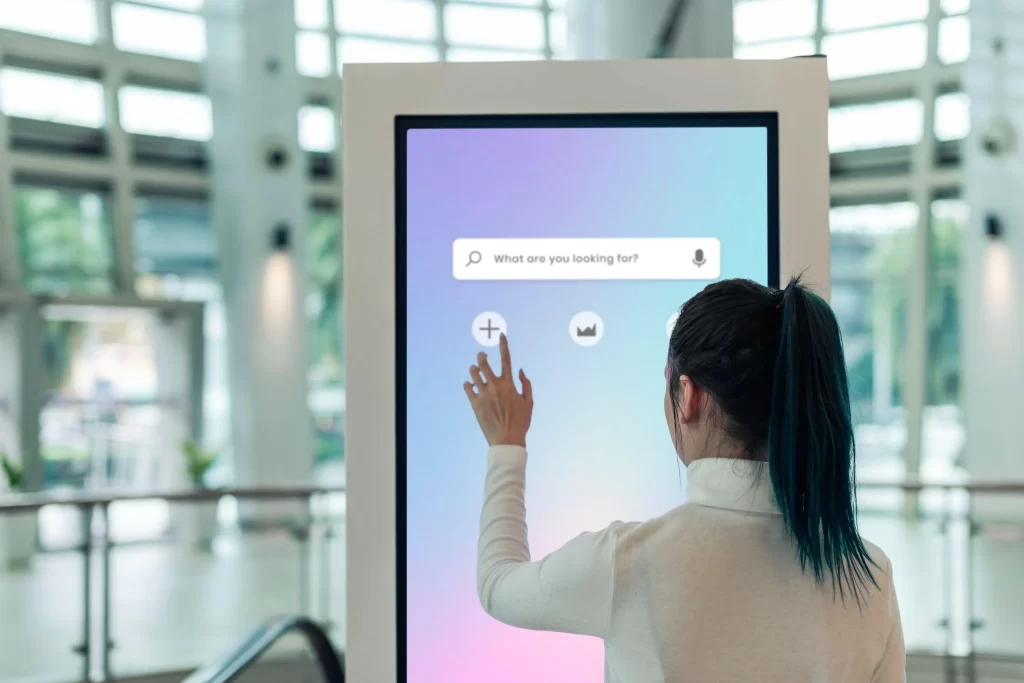
What Is Kiosk Mode?
A kiosk mode is a restricted environment for devices. Instead of giving users full access, it limits them to pre-approved apps or content that has been configured in advance.
For example, a restaurant may use a self-service kiosk software that only shows a restaurant menu or a lobby kiosk that allows visitors to check into the system. To learn more, here are the types of kiosk modes and the supported devices:Tracking and managing a business’s assets is important to cut costs, boost efficiency, and use every resource effectively. In modern workplaces, it includes equipment, digital licenses, and intangible assets. An effective strategy for asset management allows a company to track its assets, location, and utilization accurately.
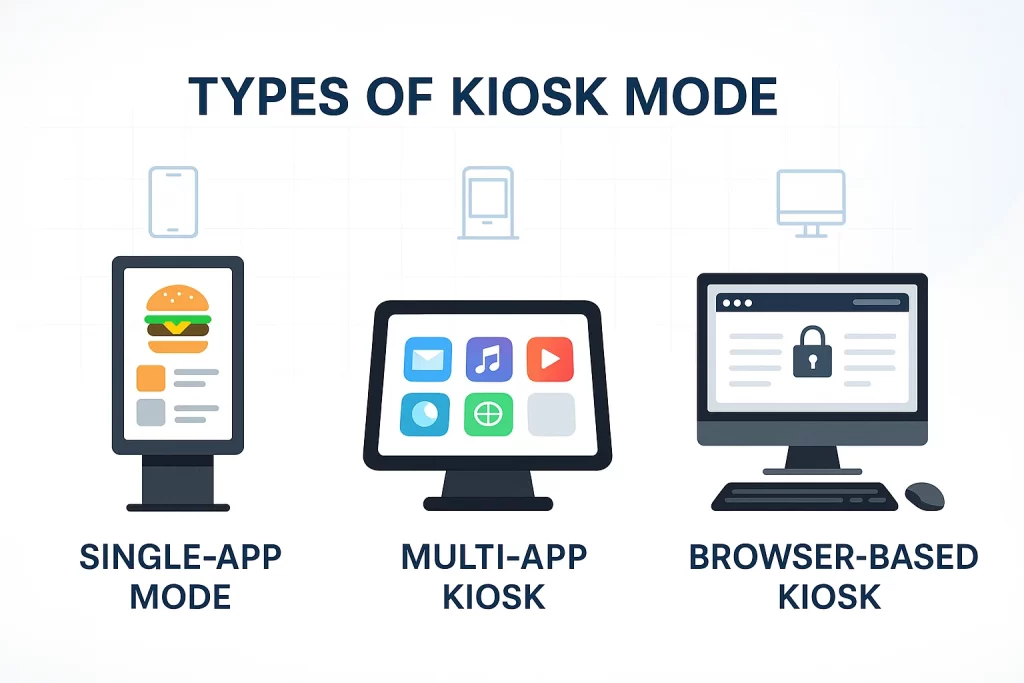
Types of Kiosk Mode
- Single-App Mode: It limits a device’s use to a single application. Single-app mode applies to self-service kiosk mode solutions, such as fast-food ordering stations.
- Multi-App Kiosk: It enables access to some limited applications.
- Browser-Based Kiosk: It is a secure browser and is sometimes employed in libraries or computer laboratories to ensure devices are locked.
Supported Devices
- Android Kiosk Mode – Commonly used in retail and fast food self-service kiosks.
- iOS/iPad Kiosk Mode – Frequently used in healthcare, hospitality, and education.
- Windows Kiosk Mode – Popularly used in corporate settings, desktops, and visitor management systems.
Kiosk mode is pretty much what it sounds like: a digital version of an old-fashioned stand-alone service station. This adaptation into the new age provides organizations with a tool to control devices across customer-facing touchpoints and enterprise workflows.
How to Set Up Kiosk Mode on Different Devices
To help businesses quickly enable kiosk functionality, here’s how you can set up kiosk mode on major platforms:
Android Kiosk Mode
You can configure kiosk mode using the built-in “Screen Pinning” feature or by enrolling the device through a Mobile Device Management (MDM) platform. MDM allows IT teams to lock devices remotely, push updates, and restrict usage to specific apps.
iOS/iPad Kiosk Mode
Apple devices use either Guided Access for temporary kiosk setups or Single App Mode for long-term business use. The latter requires supervision via Apple Configurator or an MDM solution, ensuring that the iPad stays locked to your preferred app like DeskFlex or a self-service portal.
Windows Kiosk Mode
Windows provides an Assigned Access feature that lets administrators limit a user account to a single Universal Windows Platform (UWP) app. It’s ideal for corporate and visitor management kiosks where users interact with one interface only.
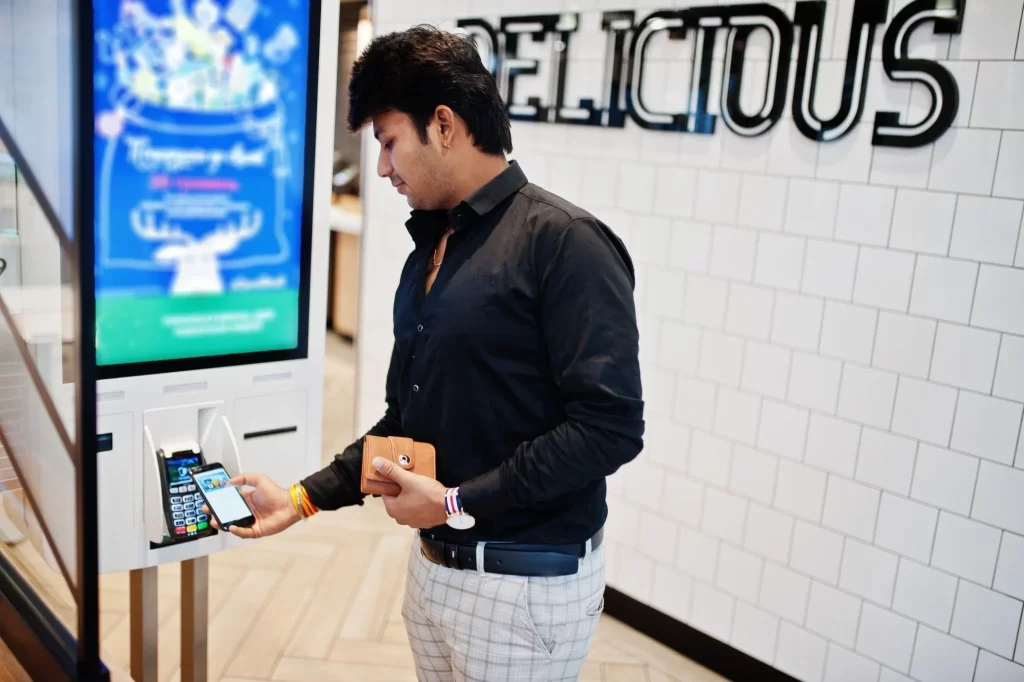
Why Businesses Need Kiosk Mode
- Reduce Distractions Without kiosk mode, devices can easily be misused because employees may browse on social media, customers may accidentally quit apps, or students may visit unauthorized sites.
- Improve Security Kiosk mode acts like a safety lock, preventing unauthorized access and minimizing risks. For example, lobby visitor kiosks protect sensitive company data while visitors are checking in.
- Simplify Workflows Users could get straight to the point without getting confused during their transactions.
- Lower IT Burden Modern digital kiosk management provides a centralized way for IT teams to monitor, update, and remotely troubleshoot devices, minimizing downtime and allowing IT staff to focus on more pressing issues.
Simplify Check-Ins with DeskFlex Kiosk Mode
Transform your workplace with touchless kiosk technology — manage check-ins, reservations, and visitor flow effortlessly with DeskFlex.
Explore DeskFlex Kiosk FeaturesSecurity and Compliance in Kiosk Mode
Security is one of the strongest reasons companies adopt kiosk mode, but it must go beyond app restrictions.
When implementing kiosk solutions, ensure that devices are connected to secure networks with firewalls enabled. Sensitive data, such as visitor check-in information, should always be encrypted and never stored locally without proper safeguards.
Kiosk Security Checklist:
Enable password-protected admin access.
Use MDM or digital kiosk management tools to push security patches.
Keep network access limited to approved domains and APIs.
Apply physical locks or mounts to prevent device tampering.
For payment kiosks, follow PCI-DSS compliance for handling transactions.
DeskFlex kiosks also support secure login and controlled permissions, ensuring that only authorized users can access administrative settings.
Real-World Use Cases of Kiosk Mode
Kiosk mode is a tech feature and functional solution that has transformed the workings of various industries. Let’s find out about its practical application across various sectors.
Retail and Food Industry
Retail and fast food industries use kiosks so customers can order quickly and reduce their waiting time while increasing order accuracy. Digital menus in kiosk mode mean lower printing costs and the ability to update specials instantly.
Education
Digital testing with a tablet is efficient with a single-app mode feature. Teachers will have the advantage of using an uncomplicated method of grading, and technology administrators will maintain device safety.
Healthcare
For patient check-in with self-service kiosks, instead of filling out a form, they can confirm their appointment on a lobby kiosk driven by appointment booking software.
Corporate/Enterprise
Tourist office kiosks use lobby visitors’ kiosks to enter guests. Once booked at kiosks, employees can also reserve workspaces in hybrid offices.
Benefits of Kiosk Mode
Kiosk mode is implemented to ease operations and create real value for businesses and customers. Here are the benefits that are evident in every industry.
- Better productivity and focus.
- Enhanced device and data security.
- Consistent user experience.
- Reduced maintenance and IT troubleshooting.
Fun Fact
According to Briggs (2023), self-service kiosks can cut transaction time by 40% and, therefore, could increase customer satisfaction, as businesses can now serve more customers.
Implementation Challenges & How To Overcome Them
Kiosk mode has its benefits; however, companies must also face challenges and overcome them. Below are the ways to overcome challenges.
- Balancing Restrictions with Usability: Limitations can frustrate users. Thus, the solution is to build it simply while allowing for essential functions.
- Training Staff and End-Users: Users and clients should be educated properly for the good functioning of kiosk systems.
- Maintenance & Connectivity Issues: A company should update kiosks regularly and have a stable internet connection.
- Hardware Costs: Initially, kiosks will require some investment. Thus, the savings in time, labor, and IT support will pay off in the long run.
Accessibility and User Experience
While kiosks simplify processes, it’s vital to ensure they’re accessible and intuitive for all users.
An effective kiosk interface should be visually clear, have large touch-friendly buttons, and use readable text with high contrast. Providing multi-language options and on-screen guidance helps visitors complete tasks without assistance.
Accessibility also includes compliance with the ADA (Americans with Disabilities Act) or local accessibility standards. Consider height-adjustable kiosks, audio assistance for visually impaired users, and clear on-screen prompts for first-time visitors.
By focusing on inclusive design, businesses not only enhance usability but also broaden customer reach and satisfaction.
From scheduling chaos, the right tools and strategies can transform asset management into an operational powerhouse for long-term success.
Best Practices for Deploying Kiosk Mode
Successful implementation and management of kiosk mode requires more than installing the software; it requires extensive planning, customization, and administration.
The following are best practices that you should keep in mind.
- Define Clear Use Cases: Identify the specific target users for the kiosk, such as restaurant guests or lobby visitors.
- Select the Right Device and Software: Remember that tablets for mobility, a permanent desktop station, and self-service kiosk software are essential for making it all happen.
- Customize the Interface: It should have an easy-to-use interface that doesn’t make users feel overwhelmed.
- Enable Remote Monitoring: A single IT team can efficiently manage multiple kiosks from a centralized dashboard.
- Schedule Regular Updates: Businesses should regularly update the kiosk software for security and functionality reasons.
- Test Before Launch: Business management should conduct trials, pick up problems, and resolve them early on.
Measuring Kiosk Performance and ROI
Kiosk mode delivers measurable improvements when tracked through proper analytics. Businesses can monitor productivity gains and identify areas that need optimization.
Key Metrics to Track:
Average transaction or check-in time.
Number of successful sessions per day.
User abandonment or error rates.
Device uptime and maintenance frequency.
Customer satisfaction or feedback scores.
Using digital kiosk management dashboards, IT teams can generate these insights remotely and make data-driven adjustments. Over time, these metrics show clear ROI through faster operations and reduced staff workload.
Future of Kiosk Mode
Kiosks now use touchscreen interfaces and AI and are managed via the cloud. These advancements make kiosks quicker and more intelligent for businesses and customers.
- AI Integration: A new breed of smart kiosks offers recommendations based on anticipating customer needs and tailoring experiences.
- Biometric Authentication: Easy and relatively secure fingerprint or facial recognition access.
- Cloud-Based Kiosk Management: The ability to manage all global kiosks from one point of control, with an extremely low IT cost overhead.
- Broader Industry Adoption: Anticipate self-check-in in airport kiosks, banks for secure transactions, and schools for digital learning.
Automation, AI, and kiosk software are some of the keys that unlock a future of enterprises, ever more efficiently.
Kiosk Offline Mode and Reliability
One overlooked aspect of kiosk systems is how they perform when the internet connection drops.
Reliable kiosks should continue functioning even offline, storing temporary data locally until connectivity is restored. For instance, a visitor kiosk can record check-ins offline and sync them automatically once the network is back.
DeskFlex kiosks are designed with reliability in mind—ensuring that even during short outages, operations continue seamlessly without data loss.
This approach prevents downtime, builds user trust, and ensures that daily workflows remain uninterrupted.
Real Example of Kiosk Mode in Action
A growing hybrid workspace adopted DeskFlex lobby visitor kiosks to streamline guest check-ins. Before installation, visitors waited in line to sign paper logs, taking an average of three minutes per entry.
After introducing self-service kiosks, check-in time dropped by 40%, and the company reduced front-desk workload by 30%. The new process also improved visitor data accuracy and enhanced office security.
This case shows how kiosk mode transforms both the visitor experience and internal efficiency with minimal manual effort.
Conclusion
When everything seems dependent on efficiency, security, and customer satisfaction for success, kiosk mode becomes more of a necessity than a technological convenience.
DeskFlex allows you to install self-service, desk booking, and lobby visitor kiosks to enable easy workplace management.
Elevate your office space with the kiosk solutions provided by DeskFlex.
Frequently Asked Questions (FAQs)
What is kiosk mode?
Kiosk mode gives a locked condition for a device, whereas users have access only to those predetermined applications or functions.
Why should businesses use kiosk mode?
Kiosk mode can increase security, limit distractions, promote productivity, and provide a uniform user experience.
What devices support kiosk mode?
Android, iOS/iPad, and Windows devices can support kiosk mode.
Is kiosk mode secure?
Yes, hindering unauthorized access and restricting usage, kiosk mode thus increases security for devices and data.
Can kiosk mode be managed remotely?
Using digital kiosk management tools, IT teams can update, monitor, and troubleshoot devices remotely.
What are the common challenges of kiosk mode?
The main challenges faced are the delicate balance between restriction and usability, maintenance of hardware, and staff training.
What is the future of kiosk mode?
AI integration, biometric authentication, and big data management in the cloud are the real courses of future development.
How much does kiosk mode cost?
The price will vary depending on the hardware, software, and deployment scale. Many suppliers also offer kiosk software on a subscription basis.
How does kiosk mode help in restaurants or retail?
It will allow self-service kiosk mode solutions like order kiosks, digital menus, and customer check-in systems.
What’s the difference between single app mode and multi-app mode?
Single-app mode limits the device to one app’s functionality, while multi-app mode allows a controlled selection of apps.




































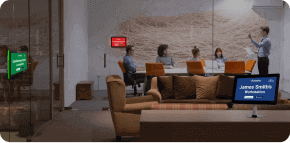















 Support
Support  Demo
Demo  Blog
Blog